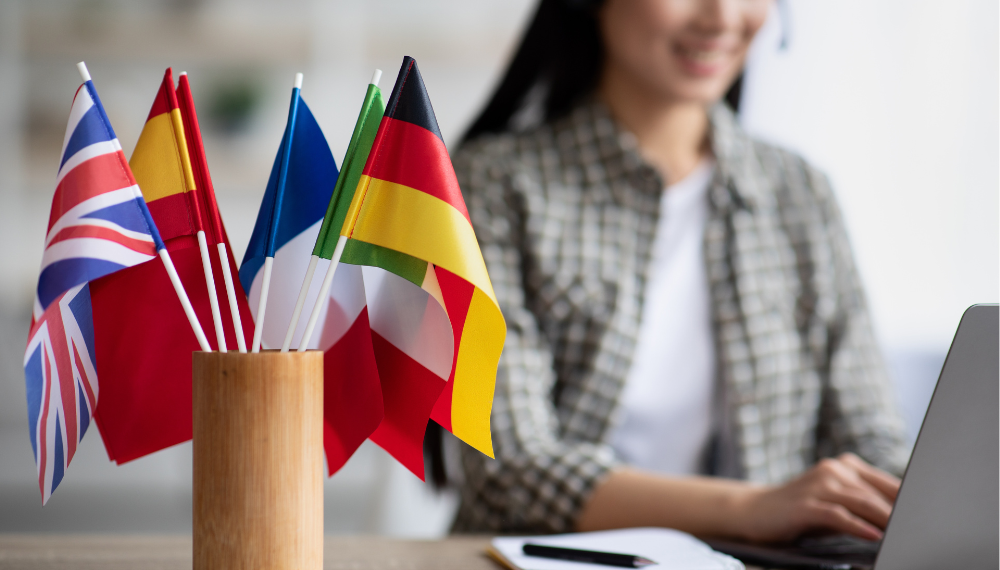Learning foreign languages with the VLE: Open the Classroom to the World

Your virtual learning environment is your best ally for teaching foreign languages in the classroom… and at home!
Nadège Gros, a CM2 (5th grade) teacher in the Meuse region of France, is a fan of the Multimedia Notebook, which she uses to share language lesson materials with her students. The number one advantage, according to her, is the ability to add authentic-language videos, allowing students to hear native speakers. Thanks to the multimedia editor, the videos are embedded and displayed without ads directly on the pages of the Multimedia Notebook.
“I include videos from all English-speaking countries, featuring men, women, or children. It allows students to hear different voices and accents. It’s an immersive language experience on top of what they already get in the classroom every day.”
“The VLE is essential”
Ms. Gros dedicates at least three hours per week to teaching various subjects in English to her French students learning the language. “The VLE is essential for this kind of project. I wouldn’t do it without the VLE—it eases the burden on families and helps children hear the language again.”
The Multimedia Notebooks also allow students to review at home: “Children can work completely alone. I often include videos with pauses so they can repeat what they hear.”
Ms. Gros also teaches German—a language many french parents don’t know at all. As a result, they’re unable to help their children with homework: “I reassure them at the beginning of the year by explaining that I use the VLE ONE. Often, they enjoy discovering the language too—it lets them engage from home.”
Using Multimedia to Build Vocabulary in Foreign Languages Lessons
In some of her Multimedia Notebooks, Nadège Gros combines images, audio recordings, and text to help students acquire vocabulary. Associating words with visuals supports memorization without systematically relying on translation.
The ONE Studio for Practicing Modern Foreign Languages
Audio production is a cornerstone of language learning. The ONE and NEO Studio includes a voice recorder and, optionally, a camera if you’d prefer to film yourself. You can use it to record words, stories, or instructions related to a lesson, or invite students to record themselves to demonstrate their learning at the end of a unit. The Studio is available on the ONE homepage or via the text editor when creating or editing a resource.
Tip: ONE and NEO are available in six languages. You can ask students to change their virtual learning environment language from the customization panel on the homepage. During their navigation, all VLE labels will appear in the chosen language. For regions subscribed to the Cantoo Web option, the content within the VLE can be translated on the fly.
What if We Corresponded with a Class Abroad?
Teaching modern foreign languages is about more than grammar exercises—it’s about opening up to the world. Looking for a motivating project for your class? Why not start a school correspondence project via the VLE? Easy to implement, this type of project brings meaning to learning, encourages cultural discovery, and provides daily language practice.
comments
Add comment